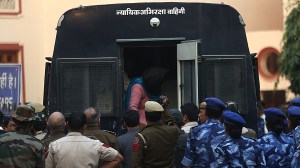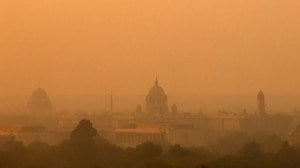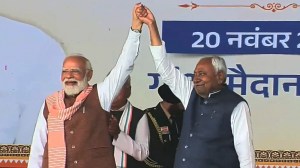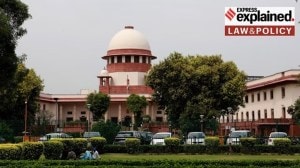Priya Kumari Shukla is a Senior Copy Editor in the Indian Express (digital). She contributes to the UPSC Section of Indian Express (digital) and started niche initiatives such as UPSC Key, UPSC Ethics Simplified, and The 360° UPSC Debate. The UPSC Key aims to assist students and aspirants in their preparation for the Civil Services and other competitive examinations. It provides valuable guidance on effective strategies for reading and comprehending newspaper content. The 360° UPSC Debate tackles a topic from all perspectives after sorting through various publications. The chosen framework for the discussion is structured in a manner that encompasses both the arguments in favour and against the topic, ensuring comprehensive coverage of many perspectives. Prior to her involvement with the Indian Express, she had affiliations with a non-governmental organisation (NGO) as well as several coaching and edutech enterprises. In her prior professional experience, she was responsible for creating and refining material in various domains, including article composition and voiceover video production. She has written in-house books on many subjects, including modern India, ancient Indian history, internal security, international relations, and the Indian economy. She has more than eight years of expertise in the field of content writing. Priya holds a Master's degree in Electronic Science from the University of Pune as well as an Executive Programme in Public Policy and Management (EPPPM) from the esteemed Indian Institute of Management Calcutta, widely recognised as one of the most prestigious business schools in India. She is also an alumni of Jamia Milia Islamia University Residential Coaching Academy (RCA). Priya has made diligent efforts to engage in research endeavours, acquiring the necessary skills to effectively examine and synthesise facts and empirical evidence prior to presenting their perspective. Priya demonstrates a strong passion for reading, particularly in the genres of classical Hindi, English, Maithili, and Marathi novels and novellas. Additionally, she possessed the distinction of being a cricket player at the national level. Qualification, Degrees / other achievements: Master's degree in Electronic Science from University of Pune and Executive Programme in Public Policy and Management (EPPPM) from Indian Institute of Management Calcutta ... Read More
UPSC Key- 6 July, 2023: What you should read in the news today
Exclusive for Subscribers from Monday to Friday: Have you ever thought about how the Foreign Contribution (Regulation) Act (FCRA) or One China policy are relevant to the UPSC Exam? What significance do topics like Special Drawing Rights or Demographic dividend have for both the preliminary and main exams? You can learn more by reading the Indian Express UPSC Key for July 6, 2023.
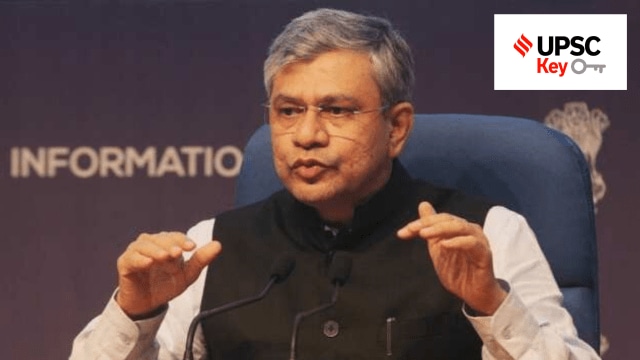 UPSC Key July 2023: Here's what you should be reading from the July 6, 2023 edition of The Indian Express. (Express Photo By Amit Mehra/File)
UPSC Key July 2023: Here's what you should be reading from the July 6, 2023 edition of The Indian Express. (Express Photo By Amit Mehra/File)
Important topics and their relevance in UPSC CSE exam for July 6, 2023. If you missed the July 5, 2023 UPSC key from the Indian Express, read it here
FRONT PAGE
Cabinet green light for data protection Bill, goes to House
Syllabus:
Preliminary Examination: Current events of national and international importance
Main Examination: General Studies II: Government policies and interventions for development in various sectors and issues arising out of their design and implementation.
Key Points to Ponder:
• What’s the ongoing story- The Union Cabinet Wednesday approved the draft data protection Bill, paving the way for its introduction in the Monsoon session of Parliament. If passed, the law will become India’s core data governance framework, six years after the Supreme Court declared privacy as a fundamental right. The Bill is one of the four proposed legislations in the IT and telecom sectors to provide the framework for the rapidly growing digital ecosystem.
• The Digital Personal Data Protection Bill, 2022-know the key features
• The Digital Personal Data Protection Bill, 2022, approved by the Cabinet, is learnt to have retained the contents of the original version of the legislation proposed last November-what was proposed previously?
• What contents were red flagged by privacy experts in the Digital Personal Data Protection Bill, 2022?
• For Your Information-The fresh draft was released following the withdrawal of an earlier version from Parliament last August after nearly four years in the works, where it went through multiple iterations, a review by a Joint Committee of Parliament (JCP), and pushback from a range of stakeholders including tech companies and privacy activists. Wide-ranging exemptions for the Central government and its agencies, remain unchanged. The Central government will have the right to exempt “any instrumentality of the state” from adverse consequences citing national security, relations with foreign governments, and maintenance of public order among other things. The control of the Central government in appointing members of the Data Protection Board – an adjudicatory body that will deal with privacy-related grievances and disputes between two parties – is learnt to have been retained as well. The Chief Executive of the board will be appointed by the Central government, which will also determine the terms and conditions of their service. One of the key changes to the final draft of the Bill is learnt to be in the way it deals with cross-border data flows to international jurisdictions – by moving away from a whitelisting approach, to a blacklisting mechanism.
• The government withdrew the earlier Personal Data Protection Bill from Parliament. Why did the Government withdrawn the Personal Data Protection Bill?
• Joint Committee of Parliament Report on the Personal Data Protection Bill-Know key highlights
• Supreme Court on Right to Privacy (Justice K.S. Puttaswamy vs. Union of India, 2017)-know the verdict
• Justice B N Srikrishna committee recommendation on Data Protection-Know key recommendations
• What are the Data protection laws in other Countries?
Other Important Articles Covering the same topic:
First FCRA, now think tank CPR loses its tax-exempt status
Syllabus:
Preliminary Examination: Indian Polity and Governance-Constitution, Political System, Panchayati Raj, Public Policy, Rights Issues, etc.
Main Examination: General Studies II: Development processes and the development industry —the role of NGOs, SHGs, various groups and associations, donors, charities, institutional and other stakeholders.
Key Points to Ponder:
• What’s the ongoing story-Four months after its license for receiving foreign donations was revoked, the Centre for Policy Research (CPR), one of the country’s leading public policy think tanks that works with several state governments and Central ministries, has lost the tax exemption status it had for almost five decades. This “debilitating blow,” as CPR’s President Yamini Aiyar called it, comes after the think tank received a show-cause notice from Income Tax (IT) authorities last December alleging it was carrying out activities “not in accordance with the objects and conditions” under which it was registered. These activities listed by the IT authorities — mentioned in the notice and reiterated in the cancellation order — include its “involvement” in the Hasdeo movement against coal mining in the Chhattisgarh forests and receipts to the tune of Rs 10.19 crore (since 2016) for its Namati-Environmental Justice Program, which were allegedly mostly used to file “litigation and complaints” rather than do research. The crux of the IT Department’s argument is that supporting litigation is not a charitable activity and, thus, CPR stands to lose its tax exemption.
• What is the issue exactly?
• Foreign Contribution (Regulation) Act (FCRA)-What and When it was enacted?
• Rationality behind the enactment of Foreign Contribution (Regulation) Act (FCRA)?
• Foreign Contribution (Regulation) Act, 2010 and Foreign Contribution Regulation (Amendment) Rules 2020-Key Changes
• NGOs and FCRA-why most of the NGOs are brought under FCRA?
• What is foreign contribution defined in Section 2(1)(h) of FCRA, 2010?
• What is a foreign source?
• Can NGOs use the foreign contributions for investment in Mutual Funds and other speculative investments?
• Who can receive foreign contribution?
• Who cannot receive foreign contribution?
• Are there any banned organisations from whom foreign contribution should not be accepted?
Other Important Articles Covering the same topic:
📍FCRA licence of think tank CPR suspended: What is FCRA, why the licence matters
Previous Year Mains Question Covering same Theme:
📍Examine critically the recent changes in the rules governing foreign funding of NGOs under the Foreign Contribution (Regulation) Act (FCRA), 1976. (Please refer GS-II Paper, 2015)
Mumbai is Taiwan’s next stop as its firms move far from China
Syllabus:
Preliminary Examination: Current events of national and international importance
Mains Examination: General Studies II: Bilateral, regional and global groupings and agreements involving India and/or affecting India’s Interest
Key Points to Ponder:
• What’s the ongoing story-At a time when top Taiwanese tech firms are looking at relocating their manufacturing facilities away from China to India, Taiwan announced Wednesday that it will open a new office in Mumbai — its third in India, after Delhi and Chennai. This is being viewed as a strategic move by Taipei, as its ‘China-Plus-one’ strategy aims at encouraging businesses to expand their operations outside of China while maintaining their presence in that country.
• Map Work-Taiwan
• What is the ‘One China’ policy?
• Why China claims Taiwan as its own territory?
• India-Taiwan Bilateral Relations-Know in detail
• Does India Recognise Taiwan as a country?
• For Your Information-While India does not have formal diplomatic ties with Taiwan yet as it adheres to the One-China policy, Taiwan has established Taipei Economic and Cultural Centres in India to conduct business here. In the absence of an embassy, they represent Taiwan’s interests in India, and while its office in Delhi functions as an embassy, the centre in Chennai operates as a consulate.
• What is “One country, two systems”?
• How Hong Kong is different from Taiwan?
• What is Taiwan’s New Southbound Policy?
• Do You Know-While India follows the One-China policy, it has an office in Taipei to carry out diplomatic functions. It operates under the name of India-Taipei Association, which is headed by a senior Indian diplomat. The India-Taipei Association (ITA) in Taiwan and Taipei Economic and Cultural Center (TECC) in New Delhi were established as de-facto Indian and Taiwanese embassies in each other’s capitals in 1995. Both sides have maintained the focus of ties on commerce, culture and education. The profile of the ties, now in their third decade, has been deliberately kept low, owing to the sensitivities of China. The bilateral trade between India and Taiwan is on an upswing. The volume of trade increased from USD 2 billion in 2006 to USD 8.9 billion in 2021.
Other Important Articles Covering the same topic:
📍Explained: The China-Taiwan tussle
Chandrayaan-3: Spacecraft is integrated with rocket body
Syllabus:
Preliminary Examination: Current events of national and international importance.
Mains Examination: General Studies III: Achievements of Indians in science & technology; indigenization of technology and developing new technology.
Key Points to Ponder:
• What’s the ongoing story-The Indian Space Research Organisation (Isro) on Wednesday (July 5) announced that it had successfully integrated the Chandrayaan-3 spacecraft with the launch vehicle, Launch Vehicle Mark-III (LVM3), at the Satish Dhawan Space Centre in Andhra Pradesh’s Sriharikota. In a tweet, Isro said, “LVM3-M4/Chandrayaan-3 Mission: Today, at Satish Dhawan Space Centre, Sriharikota, the encapsulated assembly containing Chandrayaan-3 is mated with LVM3.” The Chandrayaan-3 mission, slated to be launched between July 12 and 19, will be India’s second attempt to make a spacecraft land on the Moon. The Chandrayaan-2 mission, launched on July 22, 2019, had partially failed after its lander and rover crashed on the Moon during the early hours of September 6.
• Why has Chandrayaan-3 been integrated with LVM3?
• What is LVM3?
• What are the various components of LVM3?
• What is Chandrayaan-3 mission?
• What is the name of Chandrayaan-3 lander Rover?
• Is Chandrayaan-1 success or failure?
• Has the Chandrayaan-2 mission encountered failure?
• What was the Chandrayaan-2 mission?
• What went wrong with the Chandrayaan-2’s Vikram lander?
• What was missed because of the crash landing?
• How Chandrayaan-3 mission is different from Chandrayaan-1 and Chandrayaan-2?
• Do You Know-The landing site for the integrated Vikram lander and Pragyan rover will remain the same as the previous mission: near the south pole of the moon at 70 degrees latitude. If successful, Chandrayaan-3 will become the first mission to soft land near the southern pole of the moon. The site was selected as it has several craters that remain permanently in shadows, increasing the chances of examining water ice. Chandrayaan 1, which also carried NASA payloads, was instrumental in confirming the presence of water and hydroxyl (OH) molecules on the moon. The mission will also make India the fourth country in the world to achieve soft landing on the moon after the US, Russia and China.
Other Important Articles Covering the same topic:
📍Everything we know about ISRO’s Chandrayaan-3 ahead of its launch
THE CITY
Situation far from satisfactory: NGT on Delhi govt report on Yamuna restoration
Syllabus:
Preliminary Examination: General issues on Environmental ecology, Bio-diversity and Climate Change
Mains Examination: General Studies III: Conservation, environmental pollution and degradation, environmental impact assessment.
Key Points to Ponder:
• What’s the ongoing story-“The situation continues to be far from satisfactory as far as water quality is concerned,” the National Green Tribunal (NGT) observed in an order issued Wednesday on the rejuvenation of the Yamuna river in Delhi.
• What National Green Tribunal said for Yamuna restoration?
• For Your Information-The government’s report was submitted nearly six months after the tribunal had constituted a High-Level Committee (HLC) chaired by the L-G to look into the river’s rejuvenation. Asking for another progress report to be filed by September 30, the tribunal has directed that Delhi Pollution Control Committee may place the report submitted on Wednesday before the HLC, which may take further action against violators and errant officers. The government’s report pointed to a reduction in pollution levels in terms of BOD at two points in the river compared to 2022, and the extension of sewerage network to a few more unauthorised colonies and JJ clusters, while a total of 245 MGD (million gallons per day) of sewage is still left untreated in the city. An action plan prepared by the Environment Department and approved by the committee in January had identified 8 points on which work was to be done. Pointing to the “goal of substantial reduction” in pollution levels in Yamuna by July 1, the NGT’s order issued in January said: “Success of the committee will be viewed by outcome in terms of reduction of pollution load and thus targets of the committee should be measurable and identifiable.”
• What National Green Tribunal said for Yamuna restoration in past?
• Map Work-Yamuna (Source, Major cities, destination and Tributaries)
• What status report on the rejuvenation of the river submitted by the Delhi government says?
• What is a dissolved oxygen level?
• What do faecal coliforms indicate?
• What are chemical oxygen demand and biochemical oxygen demand?
• What is National Green Tribunal (NGT)?
• What is the Structure of NGT?
• What are the Important Landmark Judgements of NGT?
Other Important Articles Covering the same topic:
📍Once upon a river: Revisiting the relationship between Delhi and Yamuna
THE IDEAS PAGE
Syllabus:
Preliminary Examination: Current events of national and international importance.
Mains Examination: General Studies III: Science and Technology- developments and their applications and effects in everyday life and Achievements of Indians in science & technology; indigenization of technology and developing new technology
Key Points to Ponder:
• What’s the ongoing story-The first detection of gravitational waves was announced on February 11, 2016. These had been predicted, almost exactly a century ago by Albert Einstein as a natural consequence of his theory of gravity the Theory of General Relativity. General Relativity implies that under certain circumstances, space itself would be stretched and compressed resulting in the production of gravitational waves much like throwing a stone in a placid pool of water. Detection and study of gravitational waves has since opened a new window into our universe at the largest scales. Now astronomers part of different collaborative initiatives have announced the detection of ultra-low frequency gravitational waves which could expand this window to explore hitherto unexplored regions of the universe.
• What is Theory of General Relativity?
• First detection of gravitational waves in February 11, 2016 and theory of General Relativity-how they are connected?
• What is the ground-breaking discovery now?
• For Your Information-Recently, the astrophysicists were able to “hear” low-frequency gravitational waves — changes in the fabric of the universe that are created by huge objects moving around and colliding in space. “It’s really the first time that we have evidence of just this large-scale motion of everything in the universe,” said Maura McLaughlin, co-director of NANOGrav, the research collaboration that published the results in The Astrophysical Journal Letters. These gravitational waves, detected at low frequencies, create a cosmic background hum that permeates the universe. The research indicates that space is filled with these waves, which oscillate over extended periods, primarily originating from pairs of supermassive black holes spiraling and merging together.
• Einstein initially proposed the existence of gravitational waves, or ripples in space-time, in 1916 as an extension of his revolutionary theory of general relativity- What exactly is General Theory of Relativity?
• What creates gravitational waves?
• How do gravitational waves affect Humans?
• India’s Laser Interferometer Gravitational-Wave Observatory, or LIGO, project-Know the Key features and highlights
• Do You Know-Gravitational waves are ripples, or disturbances, produced in the fabric of spacetime by large moving objects, something similar to the ripples produced on the surface of water by a moving boat. The existence of gravitational waves was predicted by Albert Einstein’s general theory of relativity more than a century ago, but its experimental confirmation came only in 2015. After showing, in 1905, that space and time were not independent entities but had to be woven together as spacetime, Einstein had, in his general theory of relativity in 1915, proposed that spacetime was not a mere transparent, inert, static or fixed background to all the events in the universe. Instead, spacetime was flexible and malleable, interacted with matter, was influenced by it, and in turn, influenced the events that take place there. It was like a soft fabric that responds to, and gets deformed by, a heavy object placed on it. In 2015, scientists detected gravitational waves for the first time through LIGO (Laser Interferometer Gravitational-wave Observatory) detectors. Those waves were produced by the merger of two black holes that took place about 1.3 billion years ago. But scientists contend that such events, mergers of black holes or explosion of stars, keep happening all the time, regularly producing gravitational waves. Even the simple motion of large bodies can produce detectable gravitational waves.
Other Important Articles Covering the same topic:
📍Universe’s background hum detected: what messages it holds
📍Scientists discover that universe has a background ‘hum’
Syllabus:
Preliminary Examination: Economic and Social Development
Mains Examination: General Studies I: Population and associated issues
Key Points to Ponder:
• What’s the ongoing story- India’s biggest strength is its manpower. The next 25 years could be the golden years for the country provided we make the best use of the favourable demographic composition. To reap the demographic dividend, we need to improve our labour force participation by improving the employability of our labour force through large-scale skilling. At the same time, we need to create employment opportunities for the youth who enter the job market every year.
• Labour force participation and demographic dividend-connect the dots
• For Your Information-India’s average age is 29 years, whereas the average age in US, China, France, Germany and Japan is 38, 38, 42, 45 and 48 years, respectively. India, with its huge population, is now in a phase in which its working-age population is rising and the old-age dependency ratio coming down. The world, in contrast, is ageing with an increase in the population of the aged and a drastic reduction in fertility rates. For example, India’s old-age dependency ratio will reach 37 per cent in 2075, whereas the same will be 55.8 per cent in France, 75.3 per cent in Japan, 49.3 per cent in the US, 53 per cent in the UK and 63.1 per cent in Germany. Most countries are experiencing record low fertility rates — for example, 6.77 births per 1,000 people in the case of China — and a shrinking labour force. India is the youngest among the most populous countries in the world.
• What is demographic dividend?
• What are the issues and challenges with Demographic Dividend?
• How India can reap its demographic dividend?
• What are the initiatives and steps taken by Government of India to reap demographic dividend?
Other Important Articles Covering the same topic:
📍The 360° UPSC Debate: India’s Growing Population- Dividend or Burden?
EXPLAINED
Two hottest days ever, back-to-back: causes, and what lies ahead
Syllabus:
Preliminary Examination: General issues on Environmental ecology, Bio-diversity and Climate Change – that do not require subject specialization.
Main Examination: General Studies III: Conservation, environmental pollution and degradation, environmental impact assessment.
Key Points to Ponder:
• What’s the ongoing story- Continuing an astonishing series of record-breaking warming events this year, the past Monday and Tuesday, July 3 and July 4, have been measured to be the hottest two days for the earth ever. July 3 was the first time that the global average daily temperature crossed the 17 degree Celsius mark. That record was broken within a day, with July 4 turning out to be even hotter. The average temperature on July 3 was measured to be 17.01 degree Celsius. The next day recorded 17.18 degree Celsius. Scientists expect more such record-breaking events in the near future.
• “July 3 was the first time that the global average daily temperature crossed the 17 degree Celsius mark. That record was broken within a day, with July 4 turning out to be even hotter”-What do you understand by this statement?
• Is 17 degree Celsius is hot?
• Do You Know-A 17 degree Celsius temperature may not appear to be particularly warm. But this temperature was not over any one place or region. Instead, this is a measure of the global average temperature for the day, the average over both land and ocean, including the ice sheets in the polar region and the snow of the high mountains where surface temperatures are well below zero degree Celsius. Average temperatures over oceans are around 21 degree Celsius, and oceans occupy nearly 70 per cent of the earth’s surface. The Antarctic Ice Sheet, where temperatures can easily drop to -50 degree Celsius, covers about 8.3 per cent of earth’s surface while the Greenland Ice Sheet, which includes the Arctic region and north pole, constitutes about 1.2 per cent. The glaciers and ice caps in the mountain are estimated to account for about another 0.5 per cent of the surface. So, while there are places that routinely experience temperatures in the high 40-plus degree Celsius range, the global average is relatively cool. Before the 17 degree Celsius mark was breached on June 3, the hottest daily temperature happened to be 16.92 degree Celsius, recorded in August 2016, amid one of the strongest El Nino events.
• How El Nino impacts earth temperature?
• For Your Information-The WMO, in its annual State of Global Climate report published in May, had said that it was almost certain that at least one of the next five years (2023 to 2027) would turn out to be the warmest year on record, leaving 2016, the current record holder, behind. It had further said there was a 66 per cent chance that at least one of these years would also breach the 1.5 degree Celsius threshold, meaning that average global temperatures in that year would be at least 1.5 degree Celsius higher than pre-industrial times.
Other Important Articles Covering the same topic:
📍Monday was the hottest day ever, climate measurements show
📍Global warming: Why India is heating up slower than the world average
CMV AND TOMV: THE TWO VIRUSES THAT HIT TOMATO CROP THIS YEAR
Syllabus:
Preliminary Examination: Economic and Social Development and Indian Polity and Governance
Main Examination: General Studies III: Major crops-cropping patterns in various parts of the country, – different types of irrigation and irrigation systems storage, transport and marketing of agricultural produce and issues and related constraints; e-technology in the aid of farmers.
Key Points to Ponder:
• What’s the ongoing story- Tomato growers in Maharashtra and Karnataka have blamed two different viruses for the loss of yields earlier this year. Farmers in Maharashtra have said their tomato crop was impacted by attacks of the cucumber mosaic virus (CMV), while growers in Karnataka and other South Indian states have blamed the tomato mosaic virus (ToMV) for crop losses. Over the last three years, growers of tomato have complained of increased infestation with these two viruses, leading to partial to complete crop losses.
• What are cucumber mosaic virus (CMV) and Tomato mosaic virus (ToMV)?
• For Your Information-The two plant pathogens have similar names and cause similar damage to crops, but they belong to different viral families, and spread differently. ToMV belongs to the Virgaviridae family and is closely related to the tobacco mosaic virus (TMV). ToMV hosts include tomato, tobacco, peppers, and certain ornamental plants. CMV has a much larger host pool that includes cucumber, melon, eggplant, tomato, carrot, lettuce, celery, cucurbits (members of the gourd family, including squash, pumpkin, zucchini, some gourds, etc.), and some ornamentals. CMV was identified in cucumber in 1934, which gave the virus its name.
• How do these two viruses spread?
• How do the viruses affect the crop?
• How can the viruses be controlled?
Other Important Articles Covering the same topic:
📍IIHR report finds a plethora of viruses behind tomato crop loss in state
ECONOMY
GST Council to discuss budgetary support to hill states, cess on MUVs
Syllabus:
Preliminary Examination: Economic and Social Development and Indian Polity and Governance
Mains Examination:
• General Studies II: Functions and responsibilities of the Union and the States, issues and challenges pertaining to the federal structure, devolution of powers and finances up to local levels and challenges therein
• General Studies III: Inclusive growth and issues arising from it.
Key Points to Ponder:
• What’s the ongoing story- The contours of the budgetary support scheme which came in lieu of earlier excise duty exemption schemes for industrial units located in the Himalayan and north-eastern states are likely to be discussed in the upcoming 50th Goods and Services Tax (GST) Council meeting to be held on July 11, with a focus on the reimbursement mechanism by states for such units. In addition, the Council is also expected to discuss ministerial report on online gaming, outline the details for operationalising the appellate tribunal mechanism and clarify on the definition of multi-utility vehicles (MUVs), putting them at par with sports utility vehicles (SUVs) for similar tax treatment with compensation cess of 22 per cent, officials said.
• GST Council and Article 279A of the Constitution-Key Provisions
• GST Council and Members-Know in detail
• What is the role of GST Council?
• For Your Information-The GST Council is learnt to have received various representations for a mechanism for the state governments to reimburse balance 42 per cent of the CGST and 21 per cent of IGST paid by them to make the projects located in Himalayan and north-eastern states economically viable. States are learnt to have communicated that they are not in a position to reimburse the remaining portion of CGST, with Uttarakhand and Meghalaya saying that GST revenue growth was not satisfactory to provide additional incentives to these units. The Council is also expected to discuss the second report of the ministerial panel on online gaming to draw a consensus on whether the tax would be levied on full value of bets placed or gross gaming revenue. Earlier, the Group of Ministers was of the same view of levying a uniform 28 per cent rate on online gaming, casinos and horse racing. Later when the decision was put up for review, the GoM could not reach consensus on whether the tax levy should be on full face value of bets or GGR and hence, the final decision would be taken by the GST Council.
• What is the Goods and Services Tax (GST)?
• The Kelkar Task Force on the Fiscal Responsibility and Budget Management (FRBM) Act, 2003 and the Genesis of Goods and Services Tax (GST)
• Goods and Services Tax (GST) and 101st Amendment Act, 2016-Know in detail
• What are the different types of Goods and Services Tax (GST)?
• Know the differences between Central GST (CGST), State GST (SGST), Union territory GST (UTGST) and Integrated GST (IGST)
• How would a particular transaction of goods and services be taxed simultaneously under Central GST (CGST) and State GST (SGST)?
• What are the benefits of Goods and Services Tax (GST) in India?
• Goods and Services Tax (GST)-Issues and Challenges
Other Important Articles Covering the same topic:
RBI panel suggests measures for internationalisation of rupee; inclusion of INR in IMF’s SDR
Syllabus:
Preliminary Examination: Economic and Social Development-Sustainable Development, Poverty, Inclusion, Demographics, Social Sector Initiatives, etc.
Main Examination: General Studies III: Indian Economy and issues relating to planning, mobilization, of resources, growth, development and employment.
Key Points to Ponder:
• What’s the ongoing story- A Reserve Bank of India-appointed working group on Wednesday recommended various measures, including inclusion of the rupee in the Special Drawing Rights (SDR) basket and recalibration of the foreign portfolio investor (FPI) regime to accelerate the pace of internationalisation of the rupee. The recommendations by an Inter-Departmental Group (IDG), headed by RBI Executive Director Radha Shyam Ratho, were placed on the RBI website. The group was constituted by RBI Deputy Governor T Rabi Sankar to review the position of the rupee as an international currency and to frame a road map for the internationalisation of the domestic currency.
• What is Special Drawing Rights (SDR)?
• Internationalisation of rupee-What do you understand this?
• For Your Information-Internationalisation is a process that involves increasing the use of the rupee in cross-border transactions. It involves promoting the rupee for import and export trade and then other current account transactions, followed by its use in capital account transactions. These are all transactions between residents in India and non-residents. The internationalisation of the currency, which is closely interlinked with the nation’s economic progress, requires further opening up of the currency settlement and a strong swap and forex market. More importantly, it will require full convertibility of the currency on the capital account and cross-border transfer of funds without any restrictions. India has allowed only full convertibility on the current account as of now.
Currently, the US dollar, the Euro, the Japanese yen and the pound sterling are the leading reserve currencies in the world. China’s efforts to make its currency renminbi has met with only limited success so far.
• What are the advantages of internationalisation of the rupee?
Other Important Articles Covering the same topic:
📍Internationalisation of rupee: Why and what are the benefits?
For any queries and feedback, contact priya.shukla@indianexpress.com
The Indian Express UPSC Hub is now on Telegram. Click here to join our channel and stay updated with the latest Updates.
UPSC Magazine
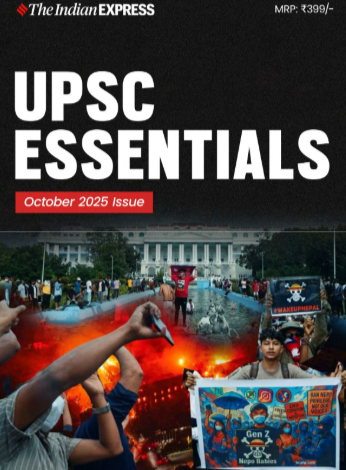
Read UPSC Magazine



- 01
- 02
- 03
- 04
- 05









